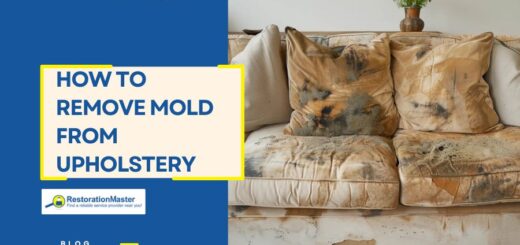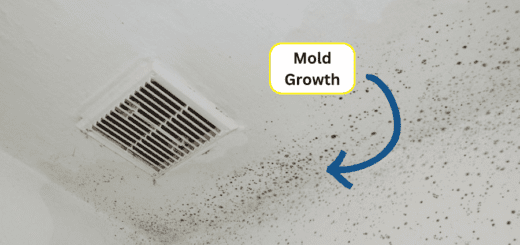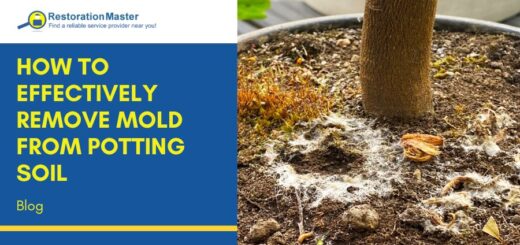How Mold Affects Different Building Materials in your Home
Almost all homeowners are familiar with moldMold is a type of fungus that grows in damp or humid conditi... More, its common causes, and the property damage and health effects it can cause. MoldMold is a type of fungus that grows in damp or humid conditi... More can affect all types of building materials in just about every area of the home but what many people do not realize is that moldMold is a type of fungus that grows in damp or humid conditi... More affects each type of building material differently. Some building materials are more susceptible to moldMold is a type of fungus that grows in damp or humid conditi... More than others and the best moldMold is a type of fungus that grows in damp or humid conditi... More removal methods to use may differ depending on the type of materials. This article discusses the effects of moldMold is a type of fungus that grows in damp or humid conditi... More on common household materials as well as methods on how to remove and prevent moldMold is a type of fungus that grows in damp or humid conditi... More growth on these various surfaces.
Importance of understanding how mold affects building materials in the home
MoldMold is a type of fungus that grows in damp or humid conditi... More can have a significant impact on various building materials in the home. When moldMold is a type of fungus that grows in damp or humid conditi... More grows on walls, it can weaken the structureStructure refers to the framework or components of a buildin... More and cause the paint to bubble and peel. MoldMold is a type of fungus that grows in damp or humid conditi... More can also damage clothes, books, and toys by creating musty odors and staining the surfaces. It can also compromise the integrity of wood, drywall, and other materials, leading to deterioration over time.
Understanding how moldMold is a type of fungus that grows in damp or humid conditi... More growth can weaken and deteriorate building materials is crucial for homeowners. MoldMold is a type of fungus that grows in damp or humid conditi... More can compromise the structural integrity of a home and create an unhealthy living environment. It’s important to be aware of the potential damage moldMold is a type of fungus that grows in damp or humid conditi... More can cause to building materials and take steps to prevent its growth.
Mold on Wood
Wood is a very common building material that is used for the structural elements of a home as well as furniture and other features, and it is also very vulnerable to moldMold is a type of fungus that grows in damp or humid conditi... More growth. MoldMold is a type of fungus that grows in damp or humid conditi... More requires moisture and an organic food source to thrive and wood acts as both a food source and moisture source due to its ability to absorb water. If given enough time, moldMold is a type of fungus that grows in damp or humid conditi... More will eventually destroy wood surfaces because it devours the nutrients on the surface but it is possible to salvage wood that has been contaminated with moldMold is a type of fungus that grows in damp or humid conditi... More. Removing moldMold is a type of fungus that grows in damp or humid conditi... More from wood may be as simple as using a moldMold is a type of fungus that grows in damp or humid conditi... More killing solutionA solution is a homogeneous mixture of two or more substance... More and making sure the wood is thoroughly dried out. If the moldMold is a type of fungus that grows in damp or humid conditi... More on the wood surface is too extensive to be removed this way, it is best to call a mold remediation professional.
Mold on Concrete
Concrete is not an organic material like wood, so the concrete itself does not act as a food source for moldMold is a type of fungus that grows in damp or humid conditi... More. However, concrete walls and surfaces can trap organic materialsOrganic materials are derived from living organisms, such as... More, such as dust and dirt which do provide a food source for moldMold is a type of fungus that grows in damp or humid conditi... More, and it is also porousPorous describes a material that contains small openings or ... More so it can provide moldMold is a type of fungus that grows in damp or humid conditi... More growth with a moisture source. The problem with concrete is that it absorbs moisture so slowly that it can have water damage for a significant period of time before it becomes apparent. If you notice moldMold is a type of fungus that grows in damp or humid conditi... More growing on a concrete surface in your home, you can remove it by scrubbing the area with a moldMold is a type of fungus that grows in damp or humid conditi... More killing solutionA solution is a homogeneous mixture of two or more substance... More and removing the organic materialsOrganic materials are derived from living organisms, such as... More from the surface that acted as a food source. Keeping the concrete dry is the biggest key to preventing moldMold is a type of fungus that grows in damp or humid conditi... More so make sure to routinely check concrete surfaces in high moisture areas such as the basement and crawlspace.
Mold on Insulation
All types of insulationInsulation is a material used in buildings to reduce the tra... More, with the exception of closed-cell spray foam, are porousPorous describes a material that contains small openings or ... More, which means they can absorb water and trap dirt and dust that can provide a food source for moldMold is a type of fungus that grows in damp or humid conditi... More. If your insulationInsulation is a material used in buildings to reduce the tra... More becomes moldy, it is best to throw it away and replace it with new insulationInsulation is a material used in buildings to reduce the tra... More. You must make sure that the area surrounding the insulationInsulation is a material used in buildings to reduce the tra... More is completely dry before installing the new insulationInsulation is a material used in buildings to reduce the tra... More to prevent the moldMold is a type of fungus that grows in damp or humid conditi... More from returning. You can also replace your insulationInsulation is a material used in buildings to reduce the tra... More with closed-cell spray foam, so you no longer have to worry about porousPorous describes a material that contains small openings or ... More insulationInsulation is a material used in buildings to reduce the tra... More getting contaminated with moldMold is a type of fungus that grows in damp or humid conditi... More.
Mold on Drywall
Much like insulationInsulation is a material used in buildings to reduce the tra... More, drywall is a very porousPorous describes a material that contains small openings or ... More surface and once moldMold is a type of fungus that grows in damp or humid conditi... More starts to grow on drywall, it cannot be removed. Drywall that is contaminated by moldMold is a type of fungus that grows in damp or humid conditi... More must be cut out and removed so that it can be replaced by new drywall. There are moisture and moldMold is a type of fungus that grows in damp or humid conditi... More resistant drywall materials available, but this just means that they have a lower risk of being contaminated by moldMold is a type of fungus that grows in damp or humid conditi... More growth – no drywall option is completely “moldMold is a type of fungus that grows in damp or humid conditi... More proof.”
Mold on Carpet
One of the most common spots for hidden moldMold is a type of fungus that grows in damp or humid conditi... More is under permanent carpeting because moisture and liquids from spills and floodingFlooding is the overflow or accumulation of water in areas t... More get absorbed into the carpet and end up underneath it. Carpets also trap dirt, dust, and other organic debris that can provide a food source for moldMold is a type of fungus that grows in damp or humid conditi... More sporesSpores are microscopic reproductive units of fungi or mold t... More. Once moldMold is a type of fungus that grows in damp or humid conditi... More starts growing underneath a carpet, it is virtually impossible to remove it completely and you may also be deceived into thinking that your carpet is dry enough to avoid moldMold is a type of fungus that grows in damp or humid conditi... More growth while the padding underneath is wet. The best way to prevent moldMold is a type of fungus that grows in damp or humid conditi... More in your carpeting is to keep it dry and react quickly to any spills before they get too deeply absorbed. If the moldMold is a type of fungus that grows in damp or humid conditi... More problem under your carpet is extensive, you should contact a professional to remove the carpeting.
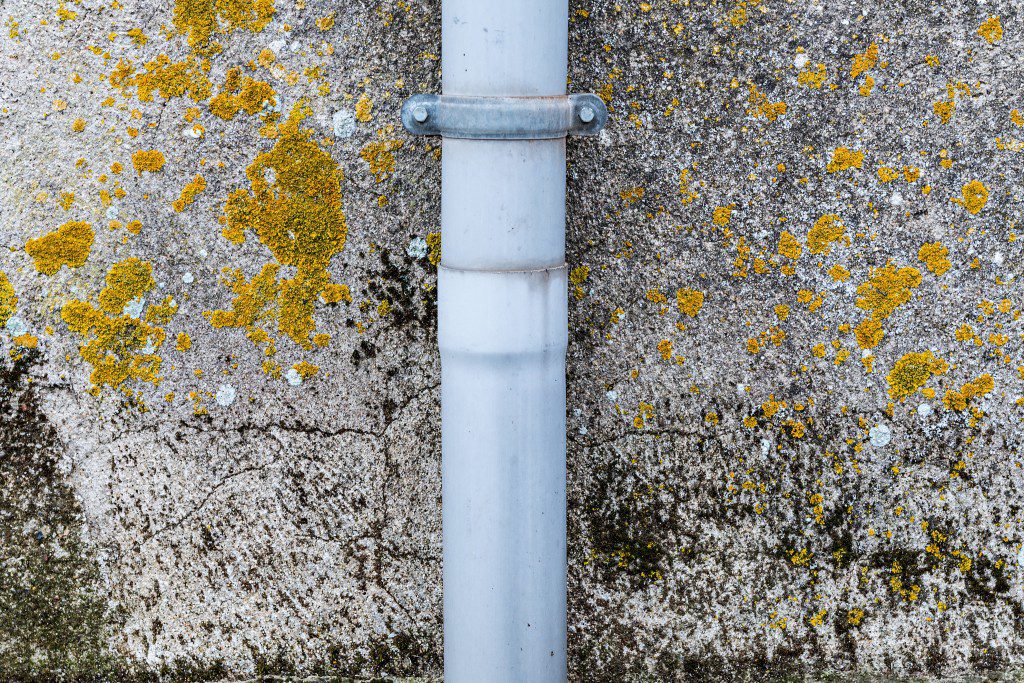
MoldMold is a type of fungus that grows in damp or humid conditi... More growing on a concrete wall
Factors Influencing Mold Growth on Different Building Materials
1. Moisture
One of the main factors that contribute to moldMold is a type of fungus that grows in damp or humid conditi... More growth on building materials is moisture. Moisture can come from various sources such as leaks, high humidityHumidity is the amount of moisture or water vapor present in... More levels, or water damage. When building materials are exposed to moisture for prolonged periods, it creates an ideal environment for moldMold is a type of fungus that grows in damp or humid conditi... More to thrive.
2. Temperature
MoldMold is a type of fungus that grows in damp or humid conditi... More tends to grow in environments where the temperature is within a certain range. Most molds thrive in temperatures between 60°F and 80°F (15°C to 27°C). However, some molds can grow in colder temperatures, while others prefer warmer climates. Understanding the temperature preferences of different molds can help prevent their growth on specific building materials.
3. Porosity
The porosity of a building material refers to its ability to absorb moisture. Materials with high porosity, such as drywall, carpet, and wood, are more susceptible to moldMold is a type of fungus that grows in damp or humid conditi... More growth as they can retain moisture for longer periods. On the other hand, materials with low porosity, such as glass or metal, are less likely to foster moldMold is a type of fungus that grows in damp or humid conditi... More growth.
4. Organic Content
MoldMold is a type of fungus that grows in damp or humid conditi... More thrives on organic matter, so building materials that contain organic components are more prone to moldMold is a type of fungus that grows in damp or humid conditi... More growth. Examples of organic materialsOrganic materials are derived from living organisms, such as... More include wood, paper, cardboard, and fabrics. These materials provide nutrients for moldMold is a type of fungus that grows in damp or humid conditi... More to feed on, increasing the likelihood of moldMold is a type of fungus that grows in damp or humid conditi... More growth.
5. Ventilation
Proper ventilationVentilation is the process of exchanging or circulating air ... More plays a crucial role in preventing moldMold is a type of fungus that grows in damp or humid conditi... More growth. Good airflow helps to prevent the build-up of moisture, which can leadLead is a heavy metal that can be toxic to humans, especiall... More to moldMold is a type of fungus that grows in damp or humid conditi... More development. Properly ventilated areas allow moisture to evaporate quickly, reducing the chance of moldMold is a type of fungus that grows in damp or humid conditi... More growth on building materials.
6. Building Design and Construction
The design and construction of a building can also influence moldMold is a type of fungus that grows in damp or humid conditi... More growth. Poorly designed infrastructure can leadLead is a heavy metal that can be toxic to humans, especiall... More to issues such as inadequate drainage, improper insulationInsulation is a material used in buildings to reduce the tra... More, or excessive condensation. These factors create conditions that promote moldMold is a type of fungus that grows in damp or humid conditi... More growth on different building materials.
7. Maintenance and Cleaning Practices
Regular maintenanceMaintenance is the routine care, inspection, and repair of a... More and cleaning practices are essential in preventing moldMold is a type of fungus that grows in damp or humid conditi... More growth on building materials. Regular inspections, prompt repairs of leaks or water damage, and cleaning with mold-resistant products can help keep moldMold is a type of fungus that grows in damp or humid conditi... More at bay. Neglecting regular maintenanceMaintenance is the routine care, inspection, and repair of a... More can leadLead is a heavy metal that can be toxic to humans, especiall... More to increased moisture levels and create a suitable environment for moldMold is a type of fungus that grows in damp or humid conditi... More to flourish.
By understanding these factors, builders, homeowners, and property managers can take necessary precautions to prevent moldMold is a type of fungus that grows in damp or humid conditi... More growth on different building materials and ensure a healthier and more sustainable living environment.
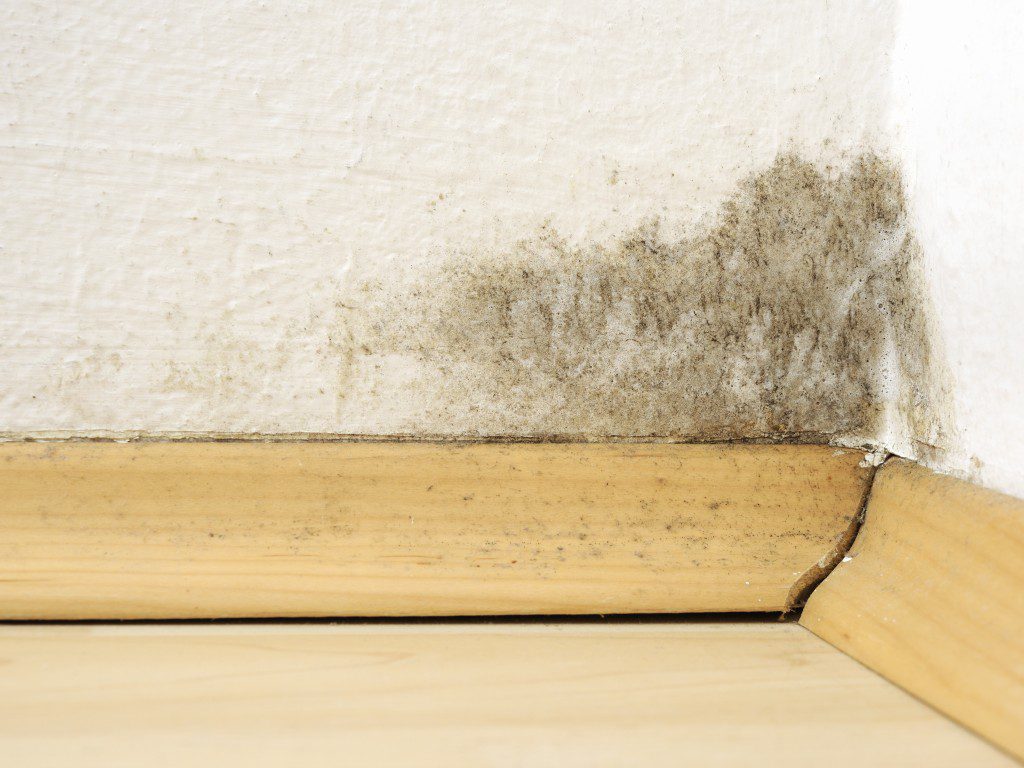
MoldMold is a type of fungus that grows in damp or humid conditi... More growing on drywall and wooden moulding
Health Risks Associated with Mold Exposure
The presence of moldMold is a type of fungus that grows in damp or humid conditi... More can have negative effects on health, as it produces allergens and irritants. These can cause symptoms such as sneezing, runny nose, red eyes, and skin rashes. Some people may also experience more severe reactions, including fever and shortness of breath.
Allergic reactions to mold spores
MoldMold is a type of fungus that grows in damp or humid conditi... More sporesSpores are microscopic reproductive units of fungi or mold t... More are a common allergenAllergens are substances that can trigger an allergic reacti... More that can cause allergic reactions in some individuals. MoldMold is a type of fungus that grows in damp or humid conditi... More sporesSpores are microscopic reproductive units of fungi or mold t... More are tiny, lightweight particles that are released into the air by mold growth and can be easily inhaled. When someone with a moldMold is a type of fungus that grows in damp or humid conditi... More allergy inhales these sporesSpores are microscopic reproductive units of fungi or mold t... More, their immune system may overreact and cause symptoms such as sneezing, runny or stuffy nose, itchy or watery eyes, coughing, and wheezing.
In more severe cases, exposure to moldMold is a type of fungus that grows in damp or humid conditi... More sporesSpores are microscopic reproductive units of fungi or mold t... More can trigger asthma symptoms in individuals with asthma. This can include chest tightness, difficulty breathing, and wheezing. In rare cases, moldMold is a type of fungus that grows in damp or humid conditi... More sporesSpores are microscopic reproductive units of fungi or mold t... More can cause a more serious allergic reaction called allergic bronchopulmonary aspergillosis, which can leadLead is a heavy metal that can be toxic to humans, especiall... More to lung damage and permanent scarring.
Severe reactions and respiratory issues
Severe reactions and respiratory issues can be a cause for concern for many individuals. Allergic reactions, asthma attacks, and other respiratory problems can be triggered by a variety of factors, from environmental allergens to certain foods and medications. These reactions can range from mild to severe and can even be life-threatening in some cases.
In addition to these acute reactions, individuals with respiratory issues also face the daily challenge of managing their symptoms and preventing flare-ups. This may involve using medications such as inhalers and oral steroids, as well as avoiding known triggers and seeking medical attention when symptoms worsen.

MoldMold is a type of fungus that grows in damp or humid conditi... More growth in a home can have dire consequences, such as destruction of property and health issues, but it effects each type of building material differently. If you discover moldMold is a type of fungus that grows in damp or humid conditi... More growing in your home, make sure you take the appropriate actions depending on what type of surface is affected. Large infestations can make moldMold is a type of fungus that grows in damp or humid conditi... More removal difficult and dangerous for those who are not experienced or trained to remove it so call a mold remediation professional if the scope of the contaminationContamination is the presence of harmful or unwanted substan... More is beyond what you can realistically handle.










